- Luật
- Hỏi đáp
- Văn bản pháp luật
- Luật Giao Thông Đường Bộ
- Luật Hôn Nhân gia đình
- Luật Hành Chính,khiếu nại tố cáo
- Luật xây dựng
- Luật đất đai,bất động sản
- Luật lao động
- Luật kinh doanh đầu tư
- Luật thương mại
- Luật thuế
- Luật thi hành án
- Luật tố tụng dân sự
- Luật dân sự
- Luật thừa kế
- Luật hình sự
- Văn bản toà án Nghị quyết,án lệ
- Luật chứng khoán
- Video
- NGHIÊN CỨU PHÁP LUẬT
- ĐẦU TƯ CHỨNG KHOÁN
- BIẾN ĐỔI KHÍ HẬU
- Bình luận khoa học hình sự
- Dịch vụ pháp lý
- Tin tức và sự kiện
- Thư giãn

TIN TỨC
fanpage
Thống kê truy cập
- Online: 223
- Hôm nay: 198
- Tháng: 1621
- Tổng truy cập: 5245625
Vietnam Threatens China with Litigation over the South China Sea
Vietnam and China have sparred over competing claims in the South China Sea for nearly 50 years. But for the first time, in November 2019, Vietnamese officials publicly issued threats to initiate international legal proceedings against China—similar to the Philippine case that ended in 2016. Since November, there have been further indications that the Vietnamese government is quite serious, despite the limited success enjoyed by the Philippines when it invoked the law. In this post, I will address two questions on this issue: What motivates the Vietnamese government to consider this step at this time? And what can Vietnam gain?

For starters, at stake are development rights for the oil and gas reserves under Vietnam’s continental shelf. While the U.N. Convention on the Law of the Sea allocates resource rights in the water and under the seabed to Vietnam, out to at least 200 nautical miles from Vietnam’s shores, China stakes a “historic rights” claim to much of the same resources through its nine-dash line. This line encompasses about 80 percent of the South China Sea but has already been formally invalidated once by the arbitrators in the Philippine case. Despite its loss in court, China did not abandon its claim. Throughout 2019, Chinese government vessels harassed Vietnamese hydrocarbon survey efforts in an especially rich undersea region known as Vanguard Bank. Under the joint venture between Rosneft and Petro-Vietnam, an exploratory drilling rig began operating in the area in July 2019. China then sent its own survey vessels—under heavy coast guard escort—to demonstrate its claim. Further north, in 2011, ExxonMobil and Petro-Vietnam discovered commercially significant oil and gas deposits in Vietnam’s Block 118. The Ca Voi Xanh (Blue Whale) gas field—the area these two companies are trying to develop—lies only 50 miles off Vietnam’s coast but straddles the vast area claimed by China. A final go-ahead decision is expected sometime this year, and gaining clarity over its legal rights to resources in the region may be a key reason for Vietnam to arbitrate.
Also at stake are fishing rights in Vietnam’s 200-mile exclusive economic zone and in the waters off the disputed Paracel Islands. The Vietnamese government defies annual Chinese fishing bans that attempt to control and curb Vietnamese fishing activities in areas that overlap with China’s nine-dash line. Arbitration in this region would clarify legal rights to the resources and deflect some of the domestic pressure to protect Vietnamese fishermen. Domestic resentment is a force that must be managed carefully since, in 2014, at the height of a dispute over Chinese oil rig HYSY 981, the Vietnamese people conducted anti-China riots, assaulted Chinese in Vietnam and vandalized Chinese commercial interests.
Finally, as noted above, Vietnam disputes Chinese ownership of the Paracel Islands, a group of small but strategically important features that lie between the Vietnamese coast and China’s Hainan Island. The islands have long been claimed by Vietnam, but Chinese forces first occupied features in the Paracels in 1955 in the wake of Vietnam’s war for independence against France. In 1974 China fought a short sea battle against South Vietnamese forces to take full control over the last remaining Vietnamese positions. Since then, China has consolidated control over the islands, built up a military garrison, and harassed or arrested Vietnamese fishermen who try to continue fishing there.
The most likely purpose behind Vietnam’s threat to litigate is to gain clarity about its resource rights and to develop leverage to stop Chinese interference so that Vietnam can move forward with exploitation contracts for its offshore gas and oil deposits. But Chinese interference with resource exploitation is not a new challenge for Vietnam. Nor is the domestic political pressure over Chinese interference with Vietnamese fishing. Both issues have been managed through diplomacy in the past. What makes this time different?
Vietnam’s threat to litigate comes amid ongoing multilateral negotiations involving the Association of Southeast Asian Nations (ASEAN) and China over a Code of Conduct for the South China Sea. Negotiations on a Code of Conduct have been under way for two decades as an upgrade to an initial agreement—the Declaration of Conduct for Parties in the South China Sea—that was seen as a stopgap measure when it was created in 2002. The parties may be close to a deal, and there is some suggestion that all sides are jockeying for position before finalizing an agreement that locks in a new status quo. To Vietnam, that status quo should provide it exclusive rights to the hydrocarbon resources under its continental shelf based on international law. This explains Vietnam’s strategy, which involves confronting China at sea to protect its exclusive resource rights, publicly advancing the legality of Vietnam’s stance and the lack of legal legitimacy for China’s claim, while maintaining multiple avenues open for diplomacy.
China, by contrast, believes a new status quo should acknowledge its extralegal historic interests in the South China Sea, including—at a minimum—joint rights to the resources under the seabed. Further, lurking just beneath the surface is a deep sense of Chinese entitlement to deference from the smaller states of Southeast Asia. Vietnam’s acceptance of Chinese resource rights in the South China Sea therefore serves as a barometer of its acquiescence to Chinese predominance. This was the implicit message of China’s foreign ministry spokesman when he said recently that “China hoped Vietnam would respect China’s sovereignty and jurisdiction over the contested waters, and ‘not take actions that could complicate the situation’.”
Unfortunately, ASEAN is rarely able to apply effective multilateral pressure against China in the South China Sea. Its Southeast Asian members are united neither in political perspective regarding China nor in their core interests. The South China Sea disputes are an acute problem for ASEAN’s maritime states but pose little trouble for its continental members. Further, one effect of China’s co-optation of the interests of Cambodia is that ASEAN—as a consensus-driven organization—finds unity harder to achieve. Thus, there are few opportunities for Vietnam to deploy a unified Southeast Asian front against Chinese encroachment of its interests.
China’s power play in maritime Southeast Asia is apparent in its negotiating positions on the Code of Conduct. China seeks to limit the influence of the United States and other outside powers by using the code to prohibit commercial development in the South China Sea from companies outside the region. Further, China seeks a veto over military activities in the South China Sea between the Southeast Asians and outside powers. In response, the maritime Southeast Asian states issued a series of diplomatic letters to the United Nations outlining the lack of legal basis to China’s claims. These two approaches—diversifying international commercial relationships and seeking to build security relationships with outside powers—have represented some of the strongest pressure points against China that the Southeast Asian claimant states have possessed to date.
Despite increasing engagement, security developments between the U.S. and Vietnam have progressed slowly—for a variety of reasons. Vietnam maintains deep and long-standing energy and security ties with Russia, which is by far Vietnam’s largest source of weapons and military equipment. Russia is the source of one of the Vietnamese navy’s most advanced military capabilities—its Kilo diesel submarines, Gepard-class frigates, and Tarantul/Molniya-class corvettes armed with supersonic SS-N-25 anti-ship cruise missiles—as well as its K-300P Bastion-P coastal defense systems. On the energy front, Vietsovpetro, a joint Russian-Vietnamese energy corporation, has long been a major player in Vietnam’s energy industry. It is currently operating offshore in the Ca Tam (Sturgeon) oil field. The bilateral relationship was elevated from a strategic partnership to a “comprehensive strategic partnership” in 2012, paving the way for broader cooperation. One result of this change was a further advancement in Vietnam’s energy sector cooperation as they announced plans for Russia’s Rosatom State Atomic Energy Corporation to build a research center for nuclear science and technology in Hanoi with a 15-megawatt research reactor. Even as the Vietnam-Russia relationship advances, it is increasingly dwarfed by China’s growing economic and security presence. Vietnam increased its military budget by nearly 400 percent in the decade between 2005 and 2014, but its capacity is far behind the military power China can bring to bear in the South China Sea. Furthermore, Russia’s developing entente with China causes Hanoi to question whether Russian support would be available in a potential standoff with Beijing—explaining why Vietnam is actively preparing to undertake international litigation at this time.
Although Hanoi has managed so far to keep its relationship with China stable through bilateral diplomacy, it has made no progress on earning Beijing’s respect for its resource interests in the South China Sea. Multilateral diplomacy through ASEAN has been a disappointment, and Vietnam cannot count on either Russia or the U.S. to be its great power patron when the chips are down. Further, even with the rapid expansion of its military budget, Vietnam knows it cannot prevail in a standoff with China. International litigation may be an increasingly attractive option to alter trends that are not currently working in Vietnam’s favor, especially if China provokes Vietnam with a major at-sea incident of some kind.
The military imbalance, however, is not the only barrier Vietnam’s leaders will need to address if they pursue a legal case against China. Vietnam’s domestic politics are in flux as a political transition approaches. The Vietnamese Communist Party is due to elect a new slate of leaders at its National Congress in January 2021. Additionally, the Vietnamese and Chinese communist parties maintain separate relations from the formal state-to-state diplomatic ties, giving Beijing multiple avenues of influence over the country’s decision-making. Further, as Vietnam’s largest trading partner—with over $100 billion annually in two-way trade—China has tremendous influence over the health of Vietnam’s economy. Vietnam’s manufacturing sector is especially dependent on Chinese raw materials and equipment. But this dependence may be softening. In 2018, Vietnam’s National Assembly ratified its country’s participation in the Comprehensive and Progressive Agreement for Trans-Pacific Partnership (CPTPP) that became the successor to the Trans-Pacific Partnership when the Trump administration pulled out of negotiations. The CPTPP gives Vietnam low-barrier entry to major Pacific economies, including Japan, Canada and Australia. Vietnam also entered into a trade deal in 2019 with the European Union that eliminated 99 percent of the tariffs on goods imported by Europe. And, so far in 2020, Vietnamese manufacturing received a boost from the U.S.-China trade war. Even so, China remains Vietnam’s largest trading partner, giving Beijing economic—as well as political—influence over its neighbor to the south.
In opening the possibility of litigation, Vietnam hopes to overcome these vulnerabilities by harnessing the court of international public opinion as much as the strength of international law. The Vietnamese understand that litigation would not be the end of the matter, even if it wins. Persuading China to accept a South China Sea order based on law, rather than raw power and its own history, is a long game. If Vietnam challenges China in court, its purpose will be to increase the costs to Beijing of its intransigence. China needs stability in the South China Sea to pursue its long-term interest in developing a stable and reliable maritime component of its Belt and Road Initiative. If the Vietnamese win an international case over resource rights, China is likely to face many years of military and diplomatic pressure from the U.S., Japan, Australia, India, the United Kingdom, France and other states that have already demonstrated willingness to provide active support to the international legal order in the South China Sea. Accordingly, it is possible that the mere threat to litigate will have a favorable effect on Vietnam’s bilateral and multilateral negotiations with China. If not, following through with international litigation may be Vietnam’s best way to change unfavorable trends in the South China Sea.
The views expressed are the author’s own and do not reflect the official views of the U.S. Navy or any other agency of the U.S. government.
By https://www.lawfareblog.com/
Các bài viết khác
- Từ sự kiện Tổng biên tập báo TIME Greta Thunberg là Nhân vật của năm 2019 đến báo cáo Biến đổi khí hậu Phúc trình của IPCC báo động đỏ cho nhân loại 82021 (15.01.2020)
- Cổ phiếu giảm sàn la liệt, vốn hóa thị trường chứng khoán Việt Nam bốc hơi 8,5 tỷ USD trong phiên 27/7 (30.07.2020)
- Tư duy đất liền và tư duy biển (30.07.2020)
- Cảm nghĩ tháng Bảy (30.07.2020)
- Kinh tế toàn cầu 6 tháng: Những khoảng tối chưa từng thấy (30.07.2020)

























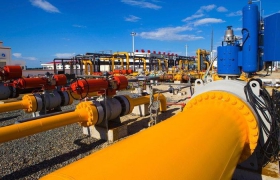




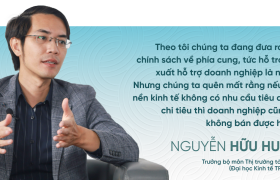
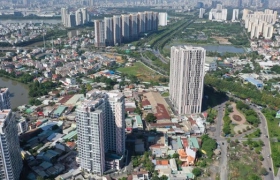
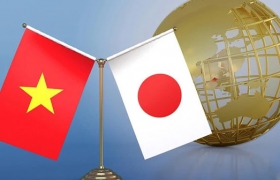

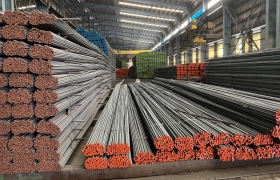







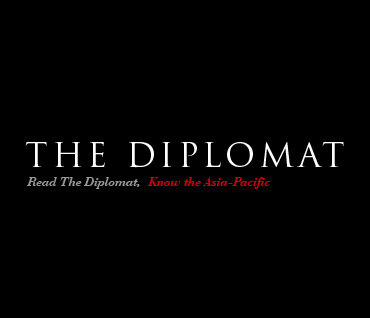







 Yahoo:
Yahoo: 